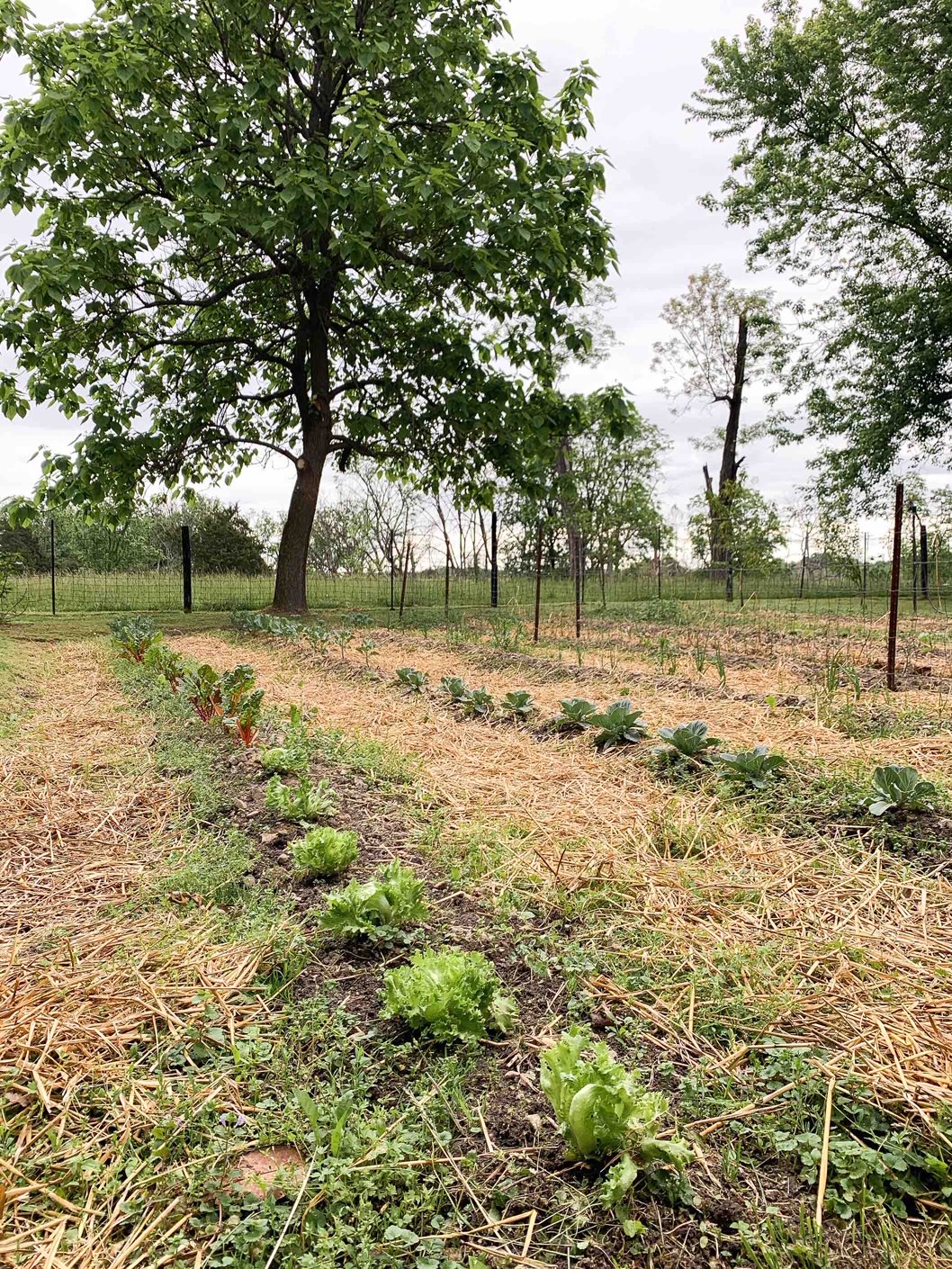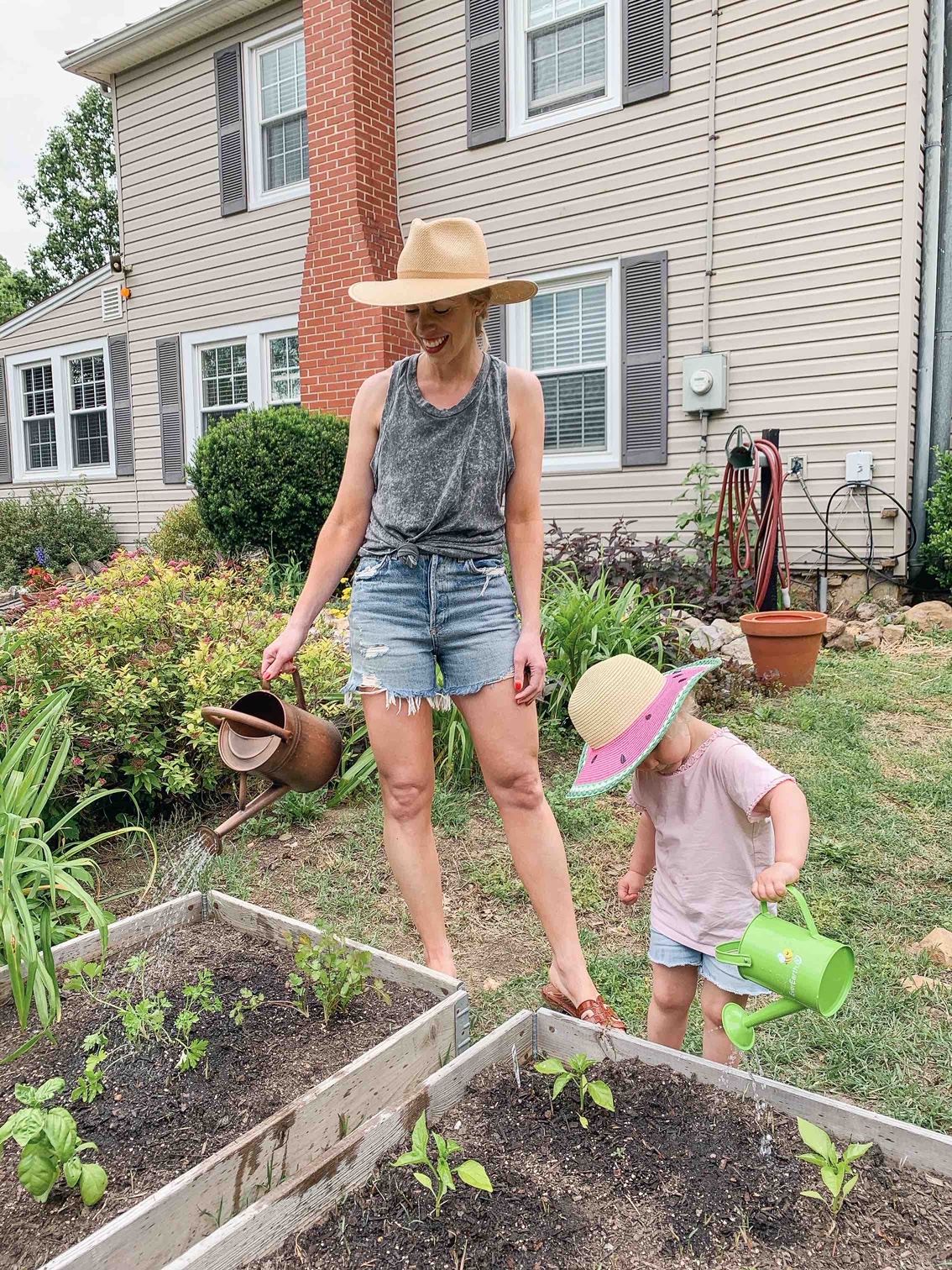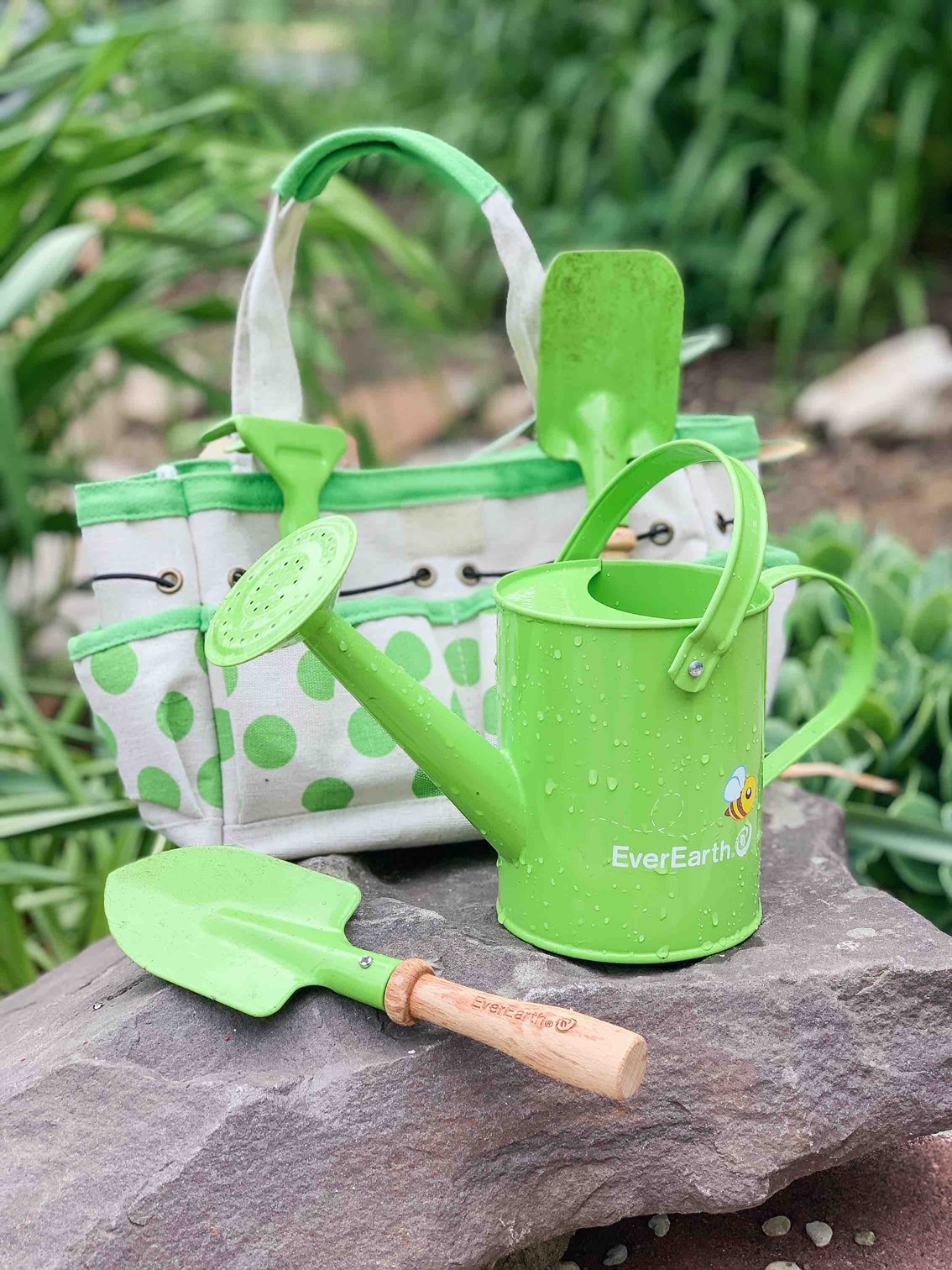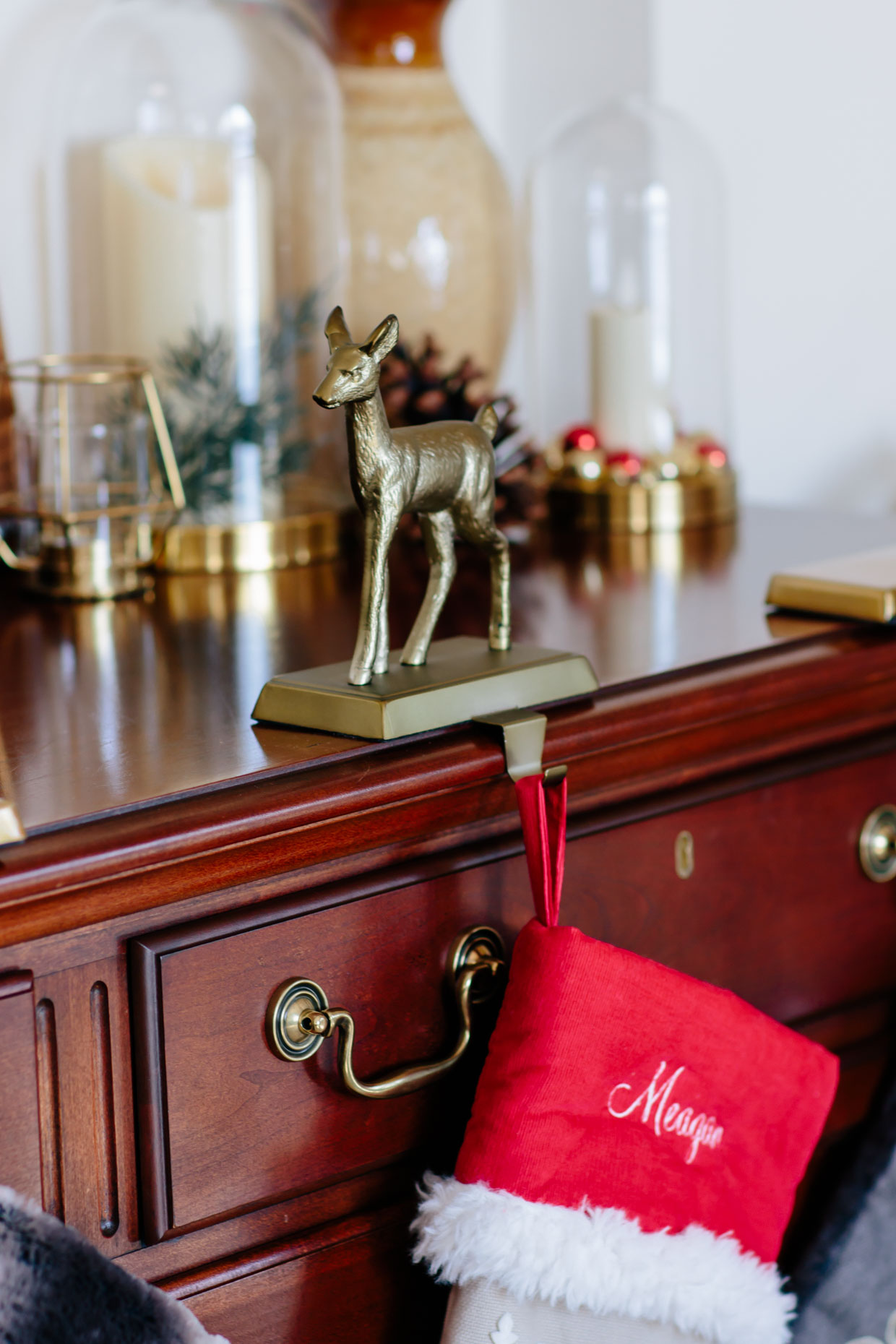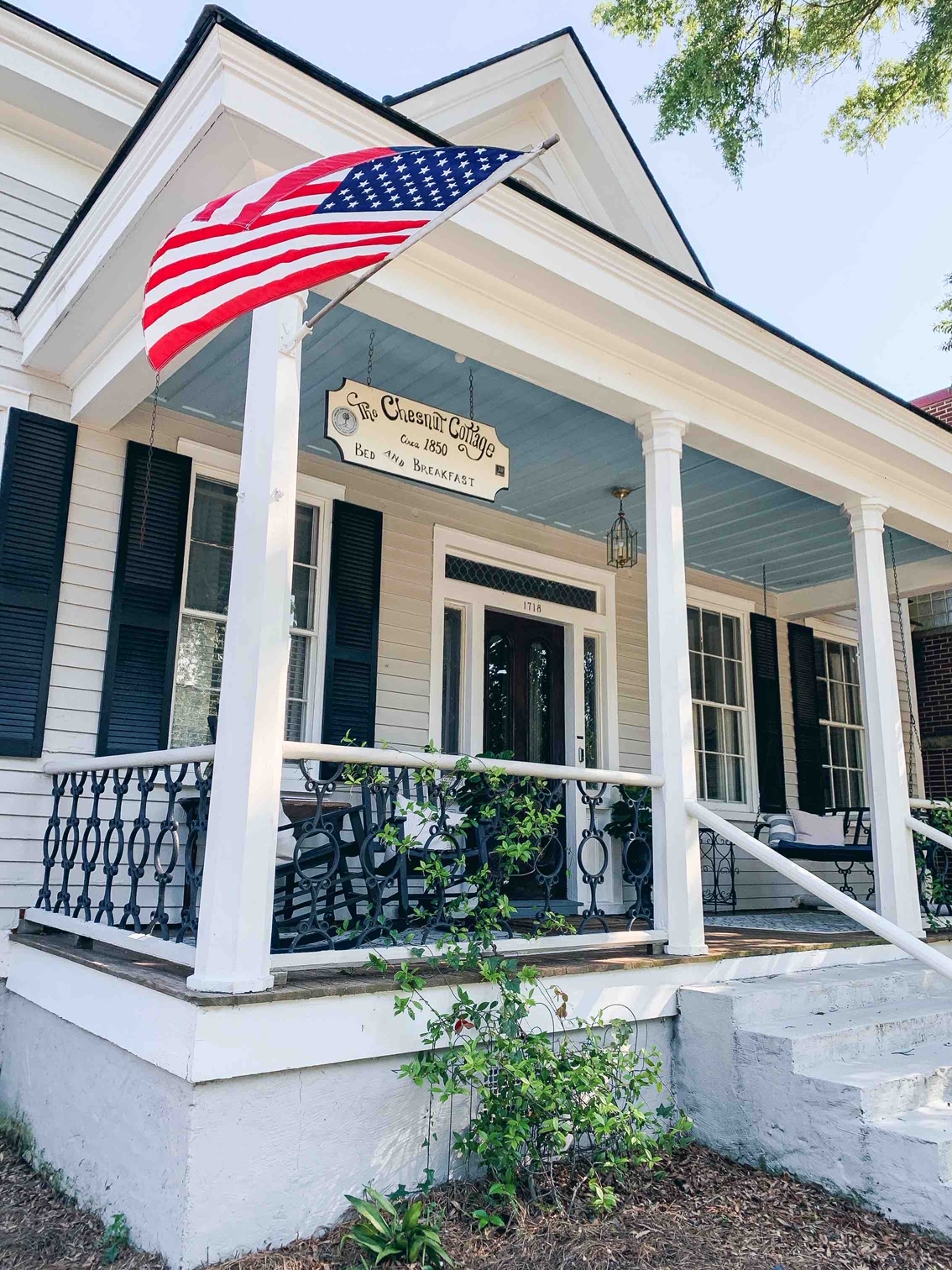I’m taking a break from fashion to talk gardening, which was a highly requested post after I polled my followers on Instagram. Growing fruits and veggies right in your own backyard is incredibly rewarding and it doesn’t get any more organic! If you have kiddos, they’ll love to help, too. I’m certainly no expert on gardening but have learned a few tips and tricks over the last few years that I can share.
Basic Tools To Start
- Soil (ideally a mix of topsoil and compost/manure)
- Pots for container plants
- Watering Can
- Trowel
- Rake
- Cages for climbing plants
- Taunton’s Complete Guide to Growing Vegetables and Herbs (my mom gave me this book and it’s with lots of photos to help understand how to care for your garden)
My mom bought Lila this cute gardening set for kids and the tools are actually very sturdy and high-quality. She loves to help me take care of the plants, especially when it comes to watering them! This one is currently sold out, but this set is a very similar option.
Setting Up for Success
- Make a list of what you eat the most, then research to see if those plants are appropriate for your amount of space and sunlight level
- Choose plants that are suitable for your climate and the level of sunlight your yard/balcony gets (I love lemons but know they won’t grow as well in our climate as somewhere like Florida!)
- In my experience, small plants tend to perform better than seeds, plus you won’t have to wait as long to harvest the produce
- Start small and work your way up to a larger plot
Large Backyard – Ground Garden Plot
Ground garden plots are a great idea if you have the space for one in your backyard. You can make one as small or large as you’d like depending on how much you want to grow, just remember to keep in mind that some plants require more space than others. It’s best to till the soil first and then mix in bagged topsoil or compost/manure to add more nutrients. Putting straw down between the rows will cut down on weeds and make it easier to walk in between (you can usually buy bales of straw at any garden center). For larger veggie gardens, having a hose hooked up nearby is also crucial. You’ll probably want to add a sprinkler if your garden is large. Plants need lots of water in the summer and trust me, it will get tedious trying to keep up with it by hand with a watering can!
Small Yard – Raised Beds
If you have a small backyard, raised beds are perfect for growing smaller vegetable plants and keeping them contained. If you aren’t sure how to build a raised bed, there are tons of tutorials on YouTube. You can even buy a fabric one like this that’s ready to go if you don’t feel like building one. Before you add the soil in the beds, make sure to put down a weed barrier underneath that still allows water to drain through (we used newspaper). 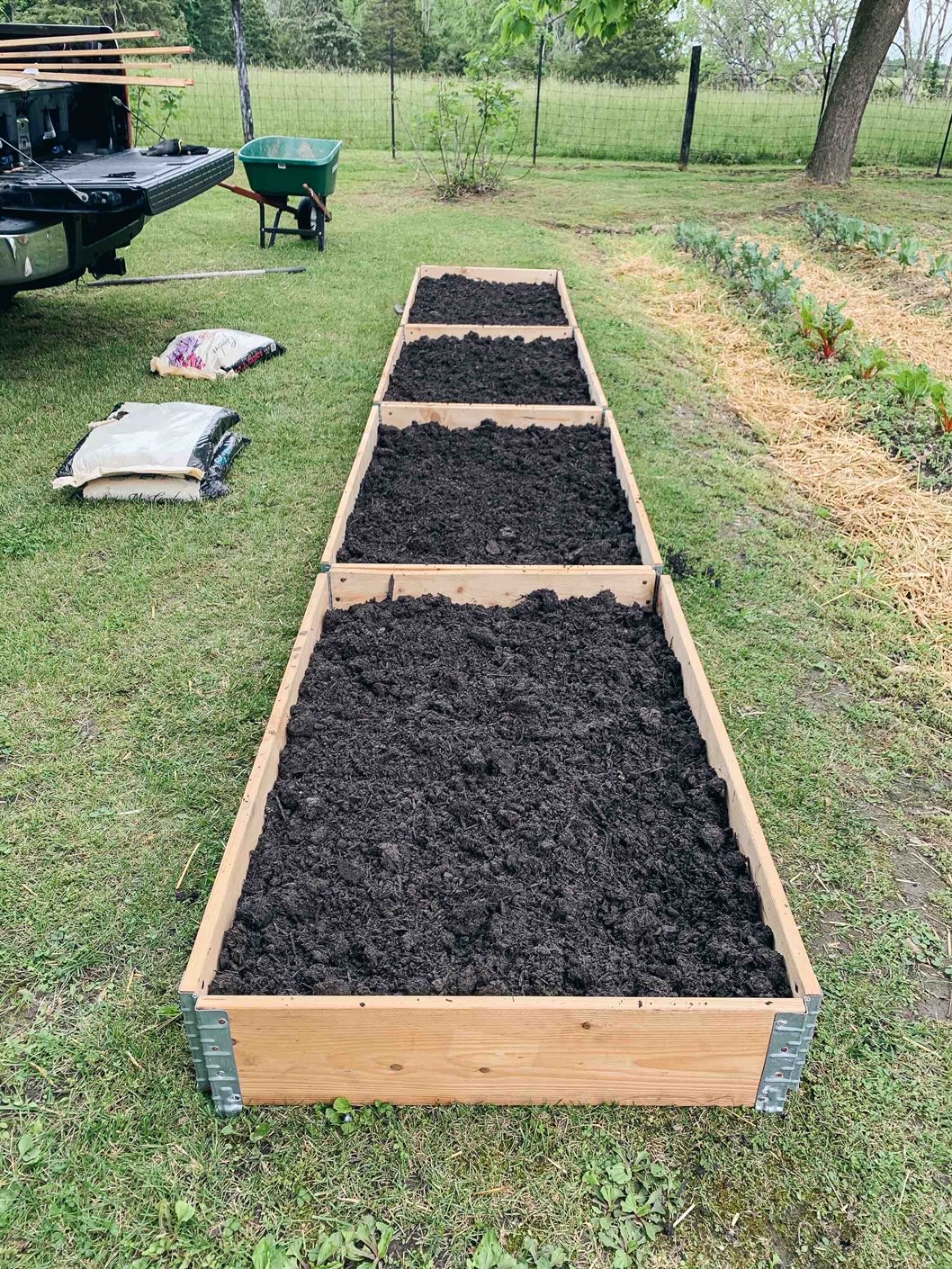 Even though we have lots of backyard space, we added some raised beds as well so we could grow more veggies. In these, we are growing carrots, cucumbers, beets and radishes.
Even though we have lots of backyard space, we added some raised beds as well so we could grow more veggies. In these, we are growing carrots, cucumbers, beets and radishes.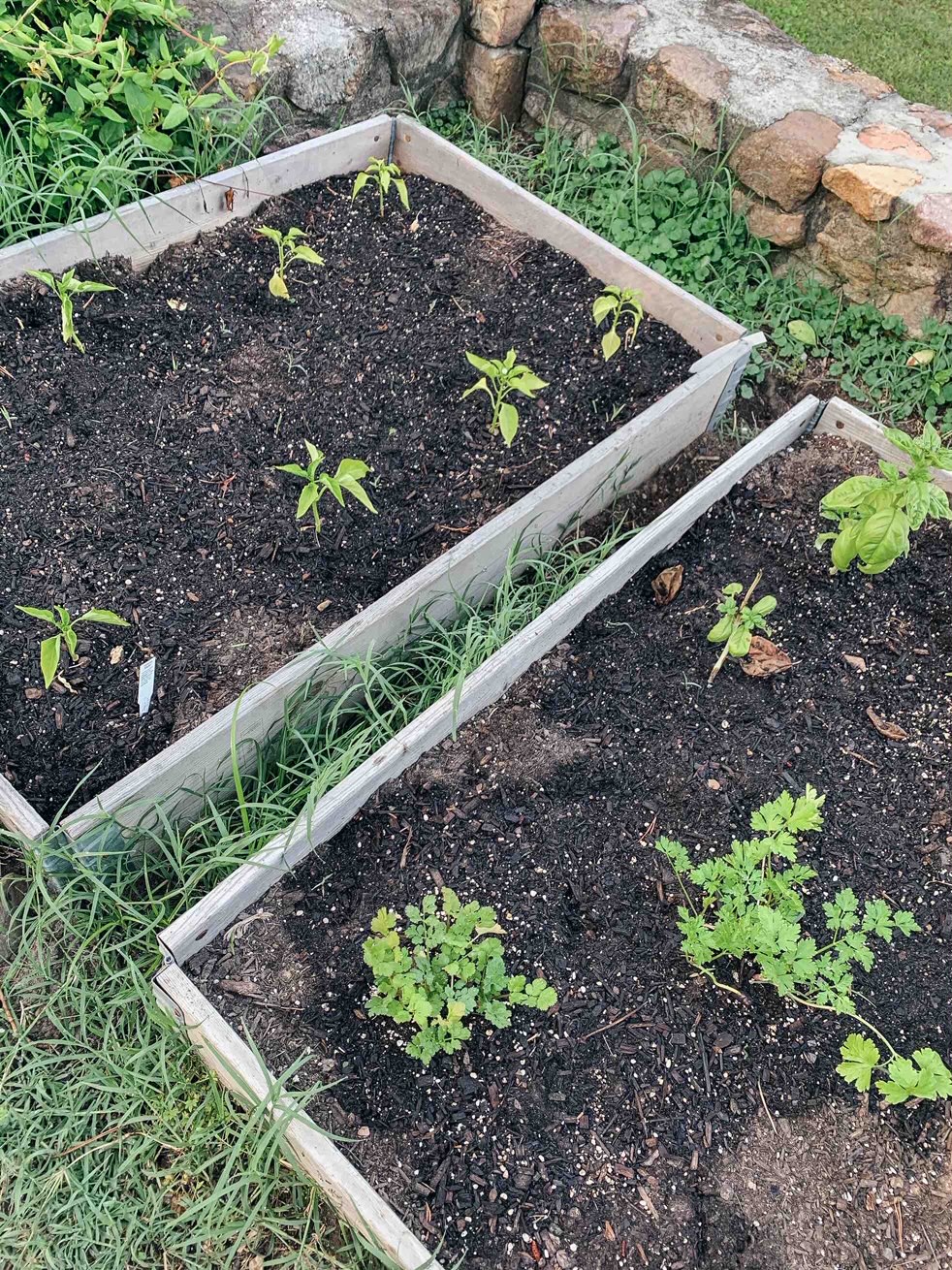 We also have a few raised beds in our front garden for plants that need full sun. On the left we have peppers, which work well in raised beds because they grow up and not out. On the right side are our herbs, which are also ideal for raised beds.
We also have a few raised beds in our front garden for plants that need full sun. On the left we have peppers, which work well in raised beds because they grow up and not out. On the right side are our herbs, which are also ideal for raised beds.
Apartments/Condos with Balconies or Decks – Containers
If you live in an apartment, condo, or a rental home where you don’t want to disturb the yard, container gardening is the way to go. It’s very easy to grow plants in containers and the best part is that you can move them anywhere. I always had herbs and tomatoes growing in pots when I was single and moving often, and later when my husband and I lived overseas. If you have a balcony, you can even get hanging boxes to grow plants on the railing. We did this when we lived in Rome but did get scolded a few times when we watered our plants at the wrong time and the water dripped onto our neighbor’s balcony (they have certain times of day when you’re ‘allowed’ to water!)
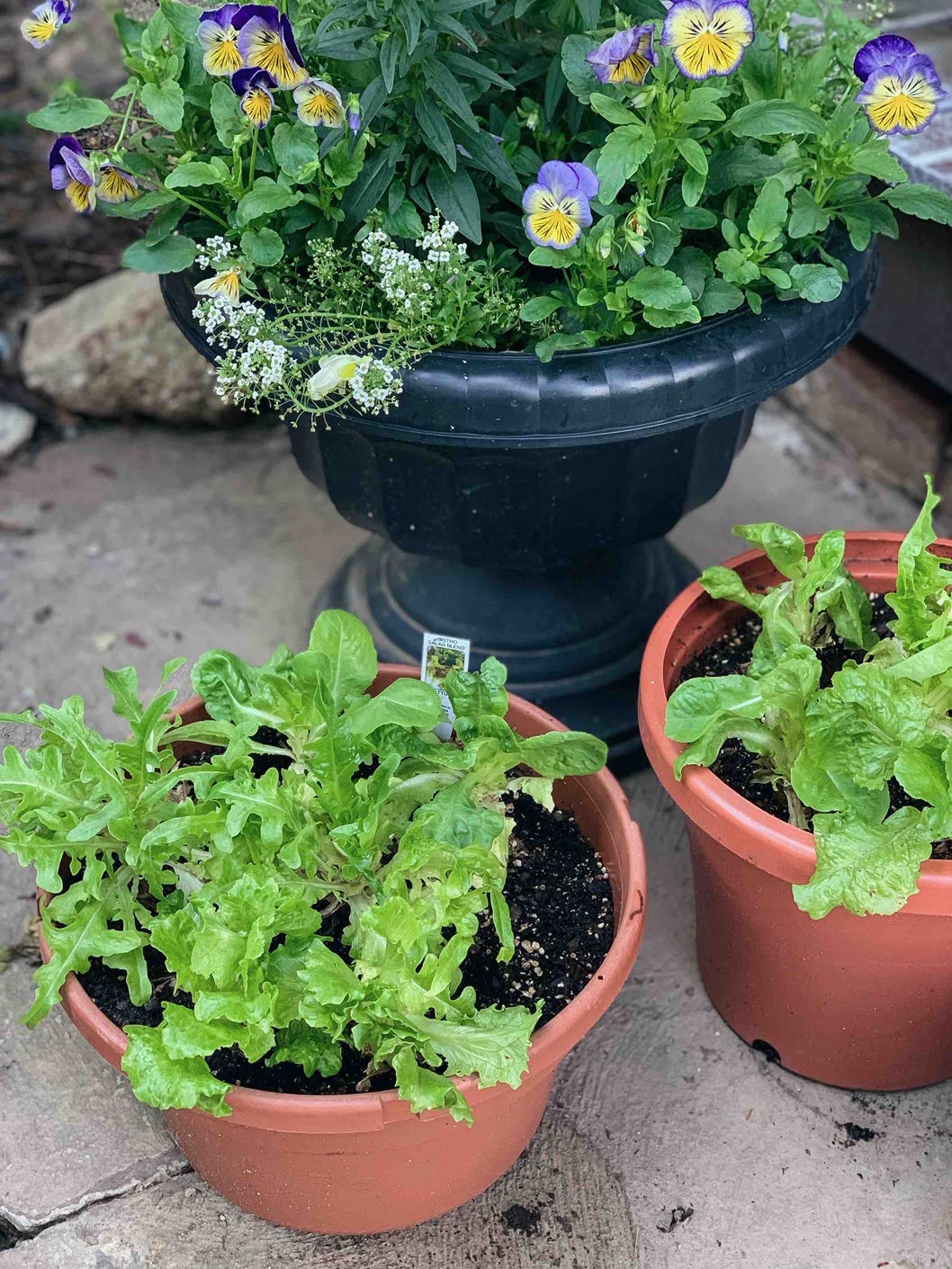 I always like to have a few lettuce plants growing in containers because they tend to do really well (even better than in the ground garden).
I always like to have a few lettuce plants growing in containers because they tend to do really well (even better than in the ground garden).
Tips for Keeping Your Garden Healthy & Bountiful
Don’t over- or under water – Pay attention to the weather (windy days will dry out soil and humidity will help keep it moist). The basic rule is that soil should be as moist as a wrung-out sponge
Fertilize occasionally – The need to fertilize plants will vary depending on climate, soil quality, etc. For example, if you notice that the leaves on your plant are starting to turn yellow, you may want to check the pH level of your soil.
Natural insect spray – I’m no expert in the pest area but my mom, who is a Master gardener, recommended this natural spray to use on our plants if you start to see insects munching on them.
Make sure plants are getting optimal sunlight – Ideally, your plants will need 8-10 hours of direct sunlight per day. Be sure to read the tags on your plants when you buy them to know what type of light they need (full sun, partial, shade).
‘Deadhead’ plants – pull or cut off old yellow/brown leaves and make sure to pick fruit as it ripens; this encourages the plant to produce more.
Weed often – I’ve learned this one the hard way! Weeding can be is very tedious but if I do a little bit at a time more often it helps keep them under control before the garden is completely overgrown.

